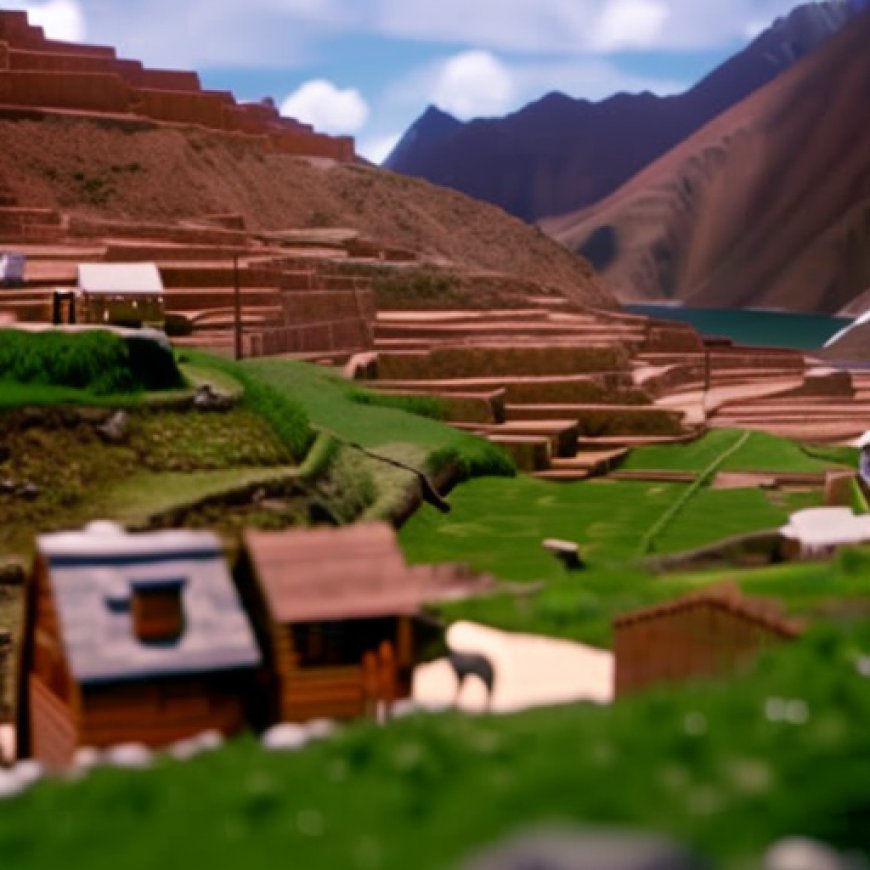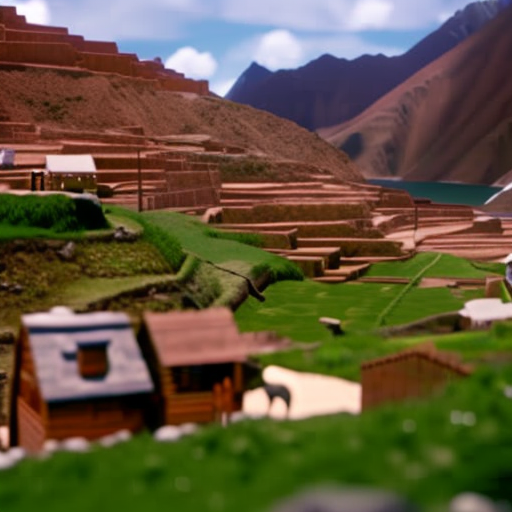Proposed copper mine modifications spark community outcry in Peru
Proposed copper mine modifications spark community outcry in Peru Mongabay.com


The Las Bambas Mine in Peru Faces Community Outcry Over Proposed Modifications
- The Las Bambas mine in Peru, one of the world’s largest copper mines, has announced a new amendment to its Environmental Impact Assessment (EIA) for the fourth time.
- The change aims to expand a mining block that could have serious contamination of water resources.
- Communities and organizations have voiced concerns over the expansion’s potential environmental impacts and have lamented the lack of consultation and ambiguous information in the EIA amendment.
- In January, a consortium of local organizations and leaders requested that the Peruvian government annul the amendment and have said they plan to escalate the conflict if needed.
In late December 2023, communities in the southeastern Peruvian province of Cotabambas received a copy of proposed modifications to the Las Bambas copper mine. The document, which arrived between Christmas and New Year’s, contained a proposal to almost double the mining operation but lacked detailed studies on its environmental impact on aquifers, wetlands, and rivers, which are crucial to the communities. Yet, they were given mere weeks to send in comments. In response, around a dozen organizations sent a letter to the agency of environmental certification for sustainable investment (SENACE), requesting they annul the amendment.
“They didn’t consult with us at all, they only sent notifications,” said Walter Contreras, a local leader of the Cotabambas Defense Front, one of several organizations that signed the letter. It was impossible to infer from the document what exactly the impacts were going to be for communities like his, which are directly in the mine’s impact zone.
The Las Bambas Mine: A Major Copper Mine
The open-pit mine of Las Bambas sits at 4,000 meters (13,100 feet) above sea level. It is one of the largest copper mines in the world, producing up to 2% of the world’s copper, a critical mineral for the clean energy transition. In theory, Las Bambas can produce 320,000 metric tons of copper concentrate a year, but widespread protests over the social and environmental impacts of the mine and the transport of minerals have never allowed the mine to fulfill that potential.

Now, the company that owns the mine, Chinese MMG Ltd., is attempting to add an amendment to its Environmental Impact Assessment (EIA) for the fourth time. The amendment includes the expansion of the company’s Ferrobamba pit by 285.3 hectares (705 acres), which would generate more than 2 million tons of waste and would require the potential irreversible loss of 12.36 hectares (30.5) of wetlands, as well as significant reduction in the flows of the Ferrobamba and Challhuahuacho rivers. In addition, local water bodies, such as the Charcascocha lagoon and the Chuspiri water reservoir, are reported to be at considerable risk of contamination.
Communities and organizations on the ground have pushed back, arguing that the document does not include enough studies and technical details to evaluate the environmental impacts and is also written in such a way that makes it inaccessible and unreadable to the communities that under Peruvian law have a right to be consulted.
“The only thing they wanted to do is check off the requirements; they weren’t interested in having a real participation,” said Elizabeth Zamalloa, an environmental engineer at CooperAcción, a nonprofit Peruvian civil association that promotes the rights of rural and Indigenous peoples. “They did it under pandemic norms, it was deficient in terms of timing, and on top of that, it was not accessible but highly technical.”
The Right to Know
At the beginning of this year, representatives of various social organizations from the district of Challhuahuacho in southern Peru signed a statement giving the government 72 hours to “restart the dialogue regarding the fourth modification of the environmental impact study” of the Las Bambas project. Ten days later, on Jan. 20, after receiving no response, the organization wrote a formal letter to the Ministry of the Environment, asking it to annul the fourth amendment of the EIA.
The activists argue that the EIA doesn’t give enough information about the Ferrobamba pit expansion or how the increase in tailings waste will be safely managed. It also lacks details on the impacts of discharging waters with higher acidic content into rivers used by several communities and how that wastewater would be pretreated, or any water management plans
SDGs, Targets, and Indicators Analysis
1. Which SDGs are addressed or connected to the issues highlighted in the article?
- SDG 6: Clean Water and Sanitation
- SDG 13: Climate Action
- SDG 15: Life on Land
- SDG 16: Peace, Justice, and Strong Institutions
The article discusses the potential contamination of water resources due to the expansion of the Las Bambas copper mine. This issue is directly connected to SDG 6, which aims to ensure the availability and sustainable management of water and sanitation for all. The article also mentions the environmental impacts of the mining operation, which is relevant to SDG 13, which focuses on taking urgent action to combat climate change and its impacts. Additionally, the destruction of wetlands and potential loss of biodiversity mentioned in the article are connected to SDG 15, which aims to protect, restore, and promote sustainable use of terrestrial ecosystems. Finally, the lack of consultation and transparency in the decision-making process raises concerns about governance and the need for strong institutions, aligning with SDG 16.
2. What specific targets under those SDGs can be identified based on the article’s content?
- Target 6.3: Improve water quality by reducing pollution, eliminating dumping, and minimizing release of hazardous chemicals and materials.
- Target 13.2: Integrate climate change measures into national policies, strategies, and planning.
- Target 15.1: Ensure conservation, restoration, and sustainable use of terrestrial and inland freshwater ecosystems.
- Target 16.7: Ensure responsive, inclusive, participatory, and representative decision-making at all levels.
Based on the issues highlighted in the article, the following targets can be identified. Target 6.3 is relevant because it focuses on improving water quality and reducing pollution, which is crucial in the context of potential contamination of water resources by the mining operation. Target 13.2 is applicable as it emphasizes the integration of climate change measures into national policies, which is important considering the environmental impacts of the mining operation and the need to address climate change. Target 15.1 is relevant because it calls for the conservation, restoration, and sustainable use of terrestrial ecosystems, including wetlands that may be affected by the mining expansion. Finally, Target 16.7 is applicable as it emphasizes the importance of inclusive and participatory decision-making processes, which is lacking in the case of the Las Bambas mine expansion.
3. Are there any indicators mentioned or implied in the article that can be used to measure progress towards the identified targets?
- Indicator 6.3.2: Proportion of bodies of water with good ambient water quality.
- Indicator 13.2.1: Number of countries that have integrated climate change measures into national policies, strategies, and planning.
- Indicator 15.1.1: Forest area as a proportion of total land area.
- Indicator 16.7.1: Proportions of positions in public institutions (national and local legislatures, public service, and judiciary) held by persons from underrepresented groups.
Although the article does not explicitly mention indicators, we can identify relevant indicators based on the targets identified earlier. Indicator 6.3.2 can be used to measure progress towards Target 6.3, as it focuses on the proportion of bodies of water with good ambient water quality, which is directly related to the potential contamination of water resources mentioned in the article. Indicator 13.2.1 can be used to measure progress towards Target 13.2, as it tracks the number of countries that have integrated climate change measures into their policies and planning, which is relevant to addressing the environmental impacts of the mining operation. Indicator 15.1.1 can be used to measure progress towards Target 15.1, as it measures the forest area as a proportion of total land area, which indirectly reflects the conservation and restoration of terrestrial ecosystems, including wetlands. Indicator 16.7.1 can be used to measure progress towards Target 16.7, as it focuses on the proportions of positions in public institutions held by persons from underrepresented groups, which is relevant to ensuring inclusive and participatory decision-making processes.
SDGs, Targets, and Indicators Table
| SDGs | Targets | Indicators |
|---|---|---|
| SDG 6: Clean Water and Sanitation | Target 6.3: Improve water quality by reducing pollution, eliminating dumping, and minimizing release of hazardous chemicals and materials. | Indicator 6.3.2: Proportion of bodies of water with good ambient water quality. |
| SDG 13: Climate Action | Target 13.2: Integrate climate change measures into national policies, strategies, and planning. | Indicator 13.2.1: Number of countries that have integrated climate change measures into national policies, strategies, and planning. |
| SDG 15: Life on Land | Target 15.1: Ensure conservation, restoration, and sustainable use of terrestrial and inland freshwater ecosystems. | Indicator 15.1.1: Forest area as a proportion of total land area. |
| SDG 16: Peace, Justice, and Strong Institutions | Target 16.7: Ensure responsive, inclusive, participatory, and representative decision-making at all levels. | Indicator 16.7.1: Proportions of positions in public institutions (national and local legislatures, public service, and judiciary) held by persons from underrepresented groups. |
Behold! This splendid article springs forth from the wellspring of knowledge, shaped by a wondrous proprietary AI technology that delved into a vast ocean of data, illuminating the path towards the Sustainable Development Goals. Remember that all rights are reserved by SDG Investors LLC, empowering us to champion progress together.
Source: news.mongabay.com

Join us, as fellow seekers of change, on a transformative journey at https://sdgtalks.ai/welcome, where you can become a member and actively contribute to shaping a brighter future.







